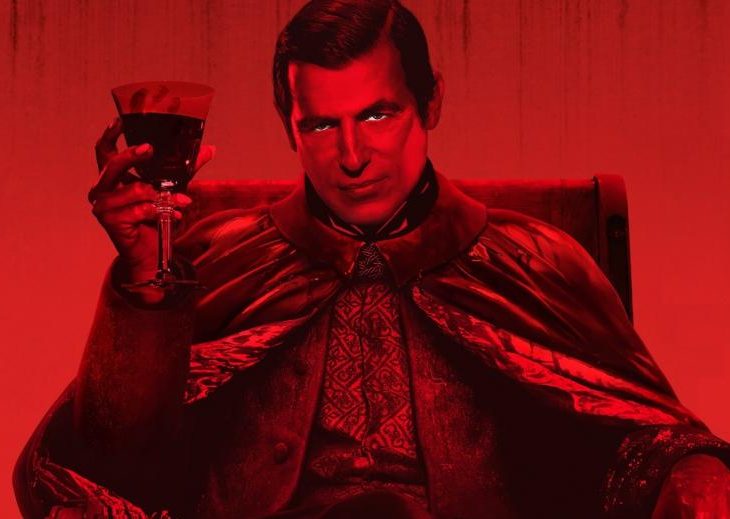“Novelty, originality & availability” key to content success
February 7, 2020
The NoTa Conference, reviewing television trends and consumption around the world, has presented research that catch-up and preview viewing for television programmes can significantly add-up to the ratings. In terms of contents, “emotainment” represents a strong trend to unite the whole family around television. Fiction remains the key genre addressing both real events and supernatural fiction formats.
Frédéric Vaulpré, VP of Glance, part of Médiamétrie, commented: “The profusion of content presents a real challenge for the market: how to capture and then retain an increasingly sought-after audience and how to adapt to the new consumption habits of TV viewers. Making content available during an extended time period via live broadcasts, catch-up and, more recently, preview appears to be essential for the television offer going forward into the future.”
Avril Blondelot, Content Insight Director at Glance, added: “Now more than ever, novelty is synonymous with audience success. In 2019, 10,600 new series were identified in the countries studied by the NoTa monitoring service. Among these new programme launches on the channels measured, the proportion of audience hits has risen in two years. Besides, over a 3 year period, quite many channels have had their most successful launch by genre in 2019 in ratings.”
New timing benefit ratings
In 2019, new ways to watch TV have become part of viewer habits. Although live TV broadcasts still account for the vast majority of daily TV viewing time, other practices are becoming established: let’s start with catch-up, which is now a well-known alternative amongst viewers. In 2019, out of the average of 3 hours and 40 mins daily TV viewing time in 5 countries combined (France, Italy, Spain, UK, US), 10 per cent was catch-up. This practice is growing its appeal across different age groups and is no longer the prerogative of young people.
Preview – the possibility of watching a programme before it airs on a scheduled broadcast – represents a remarkable audience booster for the programmes that offer this option. In the UK for example, where preview is offered, it can bring an additional 37 per cent audience share to a programme. On that side of the Channel, most preview shows are in the fictional genre, and are generally aired in the late-evening time slot. Other examples include the British series Manifest, broadcast on Sky One, and Gold Digger aired on BBC One for which 90 per cent and 58 per cent of their total audiences respectively were thanks to preview.
Emotional content and original game formats bring audiences together
Entertainment is still a strong draw to TV sets, especially as a family. Embracing this trend, the concept of “emotainment” means content that generates positive emotions around the themes of music, nostalgia and celebrations.
Over its first month on air, Song of My Life (YLE TV1, Finland), a musical look back over events in the personal and professional lives of famous guests, boosted the prime time audience share for that country’s leading channel by more than 50 per cent among its target audience: 25-44 year olds.
Similarly, Studio G (TVA, Quebec), threw a Champagne party for celebrities whose 4 episodes were watched by 1/3 of young adult TV viewers on average.
TV game shows are ever popular and gather viewers around their television sets. This year was particularly strong for original shows (twice the number versus 2017). One such example was: The Way Out (VTM, Belgium), a format that crossed a science experiment with a physical challenge and tinged it with humour; leading to an almost 80 per cent average boost in evening market share for its channel across the four episodes.
Lastly, as far as factual programming is concerned, the search for emotion is still there, but success lies in content that promotes helping others and which prompts all generations of the general public to get involved. Reflecting the current state of society, the programme The Key (RTL4, Netherlands), for example, gives homeless people the chance to make a new start by moving into accommodation. For its launch, the programme brought the channel an average audience gain of almost 75 per cent among the 20-34 year old age group.
Fiction: Between reality and the supernatural
With 4,700 series launched in 2019 (i.e. 45 per cent of the new shows studied), fiction remains one of TV content’s dominant genres. The two trends that emerged or were strengthened this year: fictions based on real events (news items and historical stories) and, on the opposite end, supernatural fiction formats.

A common sight on special interest channels, documentaries that dissect news stories and unsolved crimes are a sure-fire hit with viewers. The phenomenon now extends to fiction, with the same demands in the search for truth and information. Examples include the series Stanley H. (NPO3, Netherlands)which tells the story of Stanley Hillis, one of the most famous criminals in that country; or White House Farm (ITV, UK), which focuses on the murders of five members of the same family on their Essex farm in 1985. Finally, digging up a national incident, relying on historical elements and sticking as closely to reality as possible is the subject of the one-of-a-kind fiction: 22 July (NRK1, Norway), which returns to the Utoya massacre perpetrated by terrorist Anders Behring Breivik. This fictional evocation of a trauma that gripped the nation focused on the professionals who were affected by the events (police, paramedics, journalists, etc.), and earned the channel an extra 28 per cent average for its launch in primetime in all individuals.
Fantasy and horror series are spreading out in Western Europe and Asia on major channels. BBC has opted to air the mini-series Dracula created by the authors of Sherlock, and Hotel del Luna (TVN, South Korea), broadcast on Korea’s fourth largest channel, was introduced as one of the best science-fiction productions in 2019, increasing the average audience share for the channel by a factor of 3.5 amongst 15-34 year olds, across the first eight episodes.
